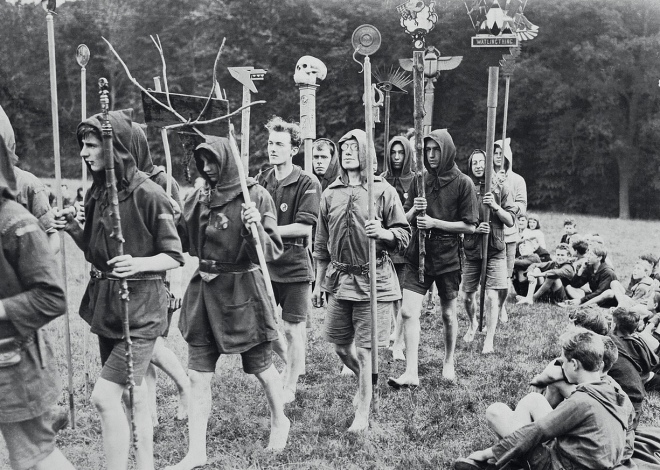On this weekend’s brief trip to London, I saw a couple of museum exhibitions, both small ones but both interesting. I’ll talk about the first one in another post, but the second was an exhibit on the KKK at the Whitechapel Gallery — no, not the Ku Klux Klan, but another bunch of robe enthusiasts, the Kibbo Kift Kindred.
These guys are an interesting bunch — pacifist Romantic types big into physical fitness, ceremony, ritual, Old-English-ish neologisms and having all kind of crazy modern-art badges and totems. I love these totems — 60 years later these guys would have been painting these designs on the shoulder pads of their Space Marines. You can read their history here.

Back in the 20s, the Kindred actually exhibited their stuff at the Whitechapel Gallery, so this is an interesting continuation. I think what really struck me about the whole thing was its amazing combination of crazy super-modern 20s design such as you might find on a Soviet propaganda poster with intentionally primitive-looking “tribal” stuff.
A couple of books on the subject came out last year:
That seems like the mass-market one; there was also a big tome called Intellectual Barbarians, but as far as I can see it’s not easy to find; even the gallery shop only had a display copy.
I have no idea.
Anyway, if you have the chance, I suggest you check it out. It’s a pretty small exhibit, but free and definitely interesting.


